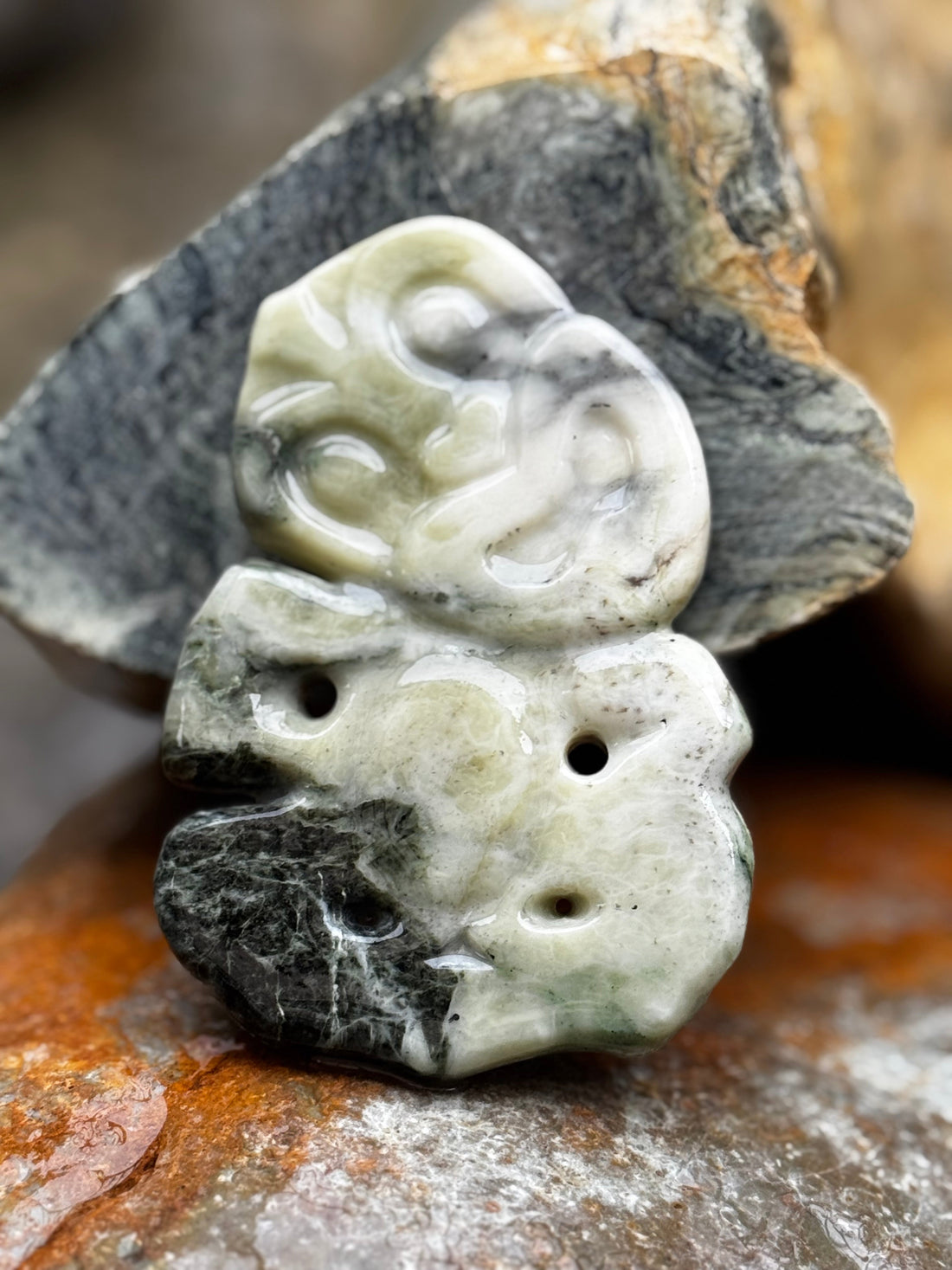
Pounamu Designs and Meanings: A Guide to Traditional Māori Greenstone Symbols
Share
Pounamu Designs & Their Meanings: Understanding the Symbols of Māori Greenstone
Pounamu, also known as New Zealand greenstone or nephrite jade, is a taonga (treasure) of immense cultural value to Māori. These sacred stones are traditionally sourced from rivers in Te Wai Pounamu (the South Island) and are passed down through generations as symbols of strength, protection, ancestry, and connection to the land and sea.
Each pounamu design carries deep meaning. Whether gifted, worn, or inherited, these carvings represent more than beauty — they embody whakapapa (genealogy), wairua (spirit), and kaupapa (purpose).
Below is a guide to traditional pounamu symbols and their meanings, reflecting both traditional Māori perspectives and contemporary understanding.
1. Hei Matau – Fish Hook
Symbolism: Strength, prosperity, safe travel over water
The Hei Matau reflects the Māori connection to Tangaroa (god of the sea) and the importance of fishing in sustaining communities. It is believed to bring good luck, protection during travel, and prosperity. Commonly worn by travelers or gifted to those embarking on a new journey.
2. Toki – Adze
Symbolism: Strength, leadership, courage
Traditionally a tool used for carving and construction, the Toki was worn by chiefs and tohunga (experts or spiritual leaders). Today, it symbolizes inner strength, determination, and mana (authority). Often gifted for achievements or leadership milestones.
3. Koru – Spiral
Symbolism: New beginnings, growth, harmony
The Koru is inspired by the unfurling frond of the ponga (silver fern). It represents new life, renewal, and the interconnectedness of all things. Ideal for marking a fresh start, birth, or personal growth.
4. Pikorua – Twist
Symbolism: Eternal bond, friendship, unity
The Pikorua (double or triple twist) represents the path of life and the enduring bond between people, even when physically separated. A powerful gift between friends, partners, or whānau (family), symbolising loyalty and lasting connection.
5. Hei Tiki
Symbolism: Fertility, ancestral wisdom, protection
The Hei Tiki is one of the most recognised Māori symbols, often regarded as a representation of the first human or an ancestral figure. Traditionally worn by high-ranking individuals, it is believed to hold protective spiritual energy and is often handed down as a heirloom.
6. Roimata – Teardrop
Symbolism: Healing, compassion, comfort
The Roimata shape, often called the teardrop, is associated with healing and empathy. It is commonly given to someone experiencing grief, hardship, or change — offering support and emotional strength.
7. Manaia
Symbolism: Spiritual guardian, balance, protection
The Manaia is a mythical being — typically with the head of a bird, body of a man, and tail of a fish — acting as a kaitiaki (guardian). It represents the balance between sky, earth, and sea, and offers protection over the wearer from harm.
8. Tiki
Symbolism: Connection to ancestors, spiritual strength
A humanoid figure linked to Tiki, the first man in Māori tradition. The Tiki symbolizes knowledge, strength, and the sacredness of whakapapa. Often worn to honor one’s ancestors or spiritual identity.
9. Whale Tail
Symbolism: Respect for the sea, strength, freedom
The Whale Tail, or Muri Paraoa, reflects strength and respect for the ocean, acknowledging whales as noble, powerful beings. It is often associated with guidance, endurance, and harmony with nature.
10. Mere
Symbolism: Authority, bravery, mana
A Mere is a traditional hand weapon made of pounamu and carried by chiefs. As a pendant, it signifies honour, power, and warrior spirit. It is worn by those who lead with strength and integrity.
11. Shark Tooth – Niho Mangō
Symbolism: Protection, strength, adaptability
Niho Mangō, the shark tooth, is a symbol of fearlessness and agility. It reminds the wearer to stay grounded, sharp, and resilient — especially during life’s challenges.
12. Crescent – Marama
Symbolism: New phases, feminine energy, potential
Representing Marama (the moon), this shape is associated with femininity, intuition, and cycles of growth. It signifies new phases and the hidden strength within change.
13. Southern Cross – Te Punga
Symbolism: Guidance, direction, navigation
The Southern Cross constellation, or Te Punga (the anchor), guided Māori navigators across the Pacific. As a pounamu design, it symbolizes finding your way, anchoring in purpose, and the wisdom of ancestral knowledge.
How to Choose the Right Pounamu
When selecting a pounamu, it’s important to consider both the stone and the design. Pounamu is often gifted with intention, carrying aroha (love) and tikanga (customs). Traditionally, it should be gifted rather than bought for oneself, though personal connection is equally meaningful in modern contexts.
Let your intuition guide you — the right piece often finds its wearer.
Final Thoughts
Wearing or gifting pounamu is more than a gesture — it’s an acknowledgment of whakapapa, wairua, and a living connection to Aotearoa. Whether you're exploring your heritage, looking for a meaningful gift, or deepening your understanding of Māori culture, learning the meanings behind each design is a respectful and powerful step.
